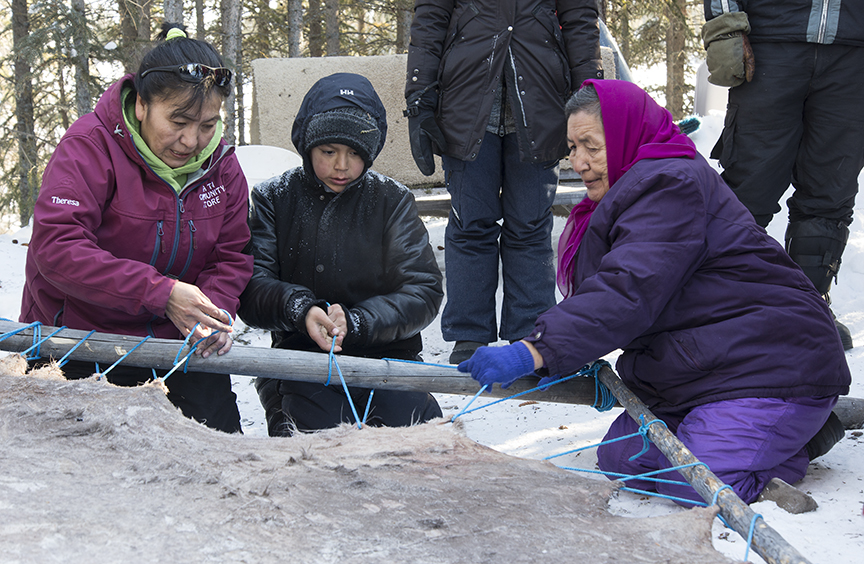Originally posted on NWT Recreation and Parks Association’s blog.

In 2014, Tides Canada and the Government of the Northwest Territories hosted a meeting of individuals involved in funding on the land initiatives in the NWT to “explore how to provide easier access to funding and other resources for northern nonprofit initiatives, including ways to develop a one window approach to jointly receive, review and learn from applications.” It was from this meeting that the NWT On the Land Collaborative Fund was created.
The Collaborative brings together the resources and expertise of a diverse group of funders and community partners, including the Government of the Northwest Territories, Tides Canada, Dominion Diamond, the NWT Recreation and Parks Association, TNC Canada, the PEW Indigenous Leadership Initiative, the Inuvialuit Regional Corporation, Gwich’in Tribal Council, NWT Métis Nation, Dehcho First Nations, and the Tłı̨chǫ Government.
The first call for applications was issued in November 2015 with an application deadline of January 31, 2016. The fund received 209 applications requesting a total of 10.9 million dollars. Community advisors and funders met in Yellowknife in February to review the applications and allocate funding. In the end, 35 applications were approved for $391,850. Recipients included the newly established Nature Club in Hay River, a traditional medicine program in Fort MacPherson, a girls leadership canoe trip organized by Northern Youth Leadership, and a winter culture camp for youth in Fort Simpson.
A collaborative fund model is meant to streamline the application and reporting process in order to easily and efficiently connect programs with funds. As Steve Ellis, the Tides Canada Program Lead for Northern Canada, observes, “Grantees can spend an inordinate amount of time navigating different applications and reporting procedures. By offering one window, applicants can send one proposal to all funders and, if successful, one report. As a result, a larger amount of time can be spent delivering the programs and applicants no longer need to try to morph their programs to fit different criteria. Funder collaboratives allow different parties to pool their resources and share information—creating better outcomes, efficiencies, and more opportunities for shared learning.”
As the gross disparity between the number of applications and the number of funded projects makes clear, there is a need to grow the fund in order to better support the transformational work of on the land programming in the territory. In addition to enhancing the application process, identifying new fund partners and deepening the engagement of existing partners are priorities for the coming year.
Learn more about the history and mechanics of the fund, as well as the projects that were supported in the recently-released 2016 NWT On the Land Collaborative Fund Report.
If you would like to learn more about NWT On the Land Collaborative Fund, contact Steve Ellis at: steve.ellis@makeway.org